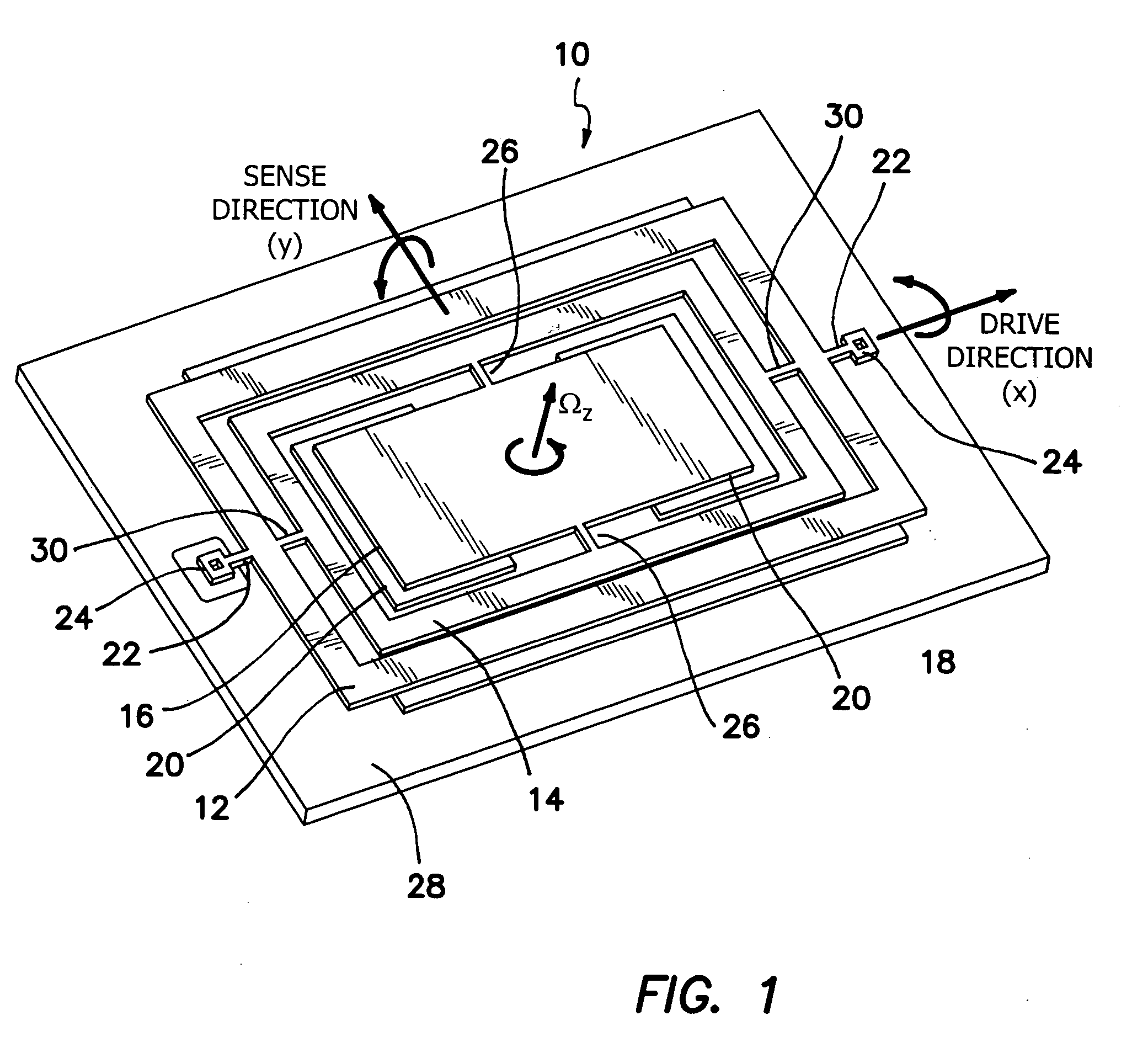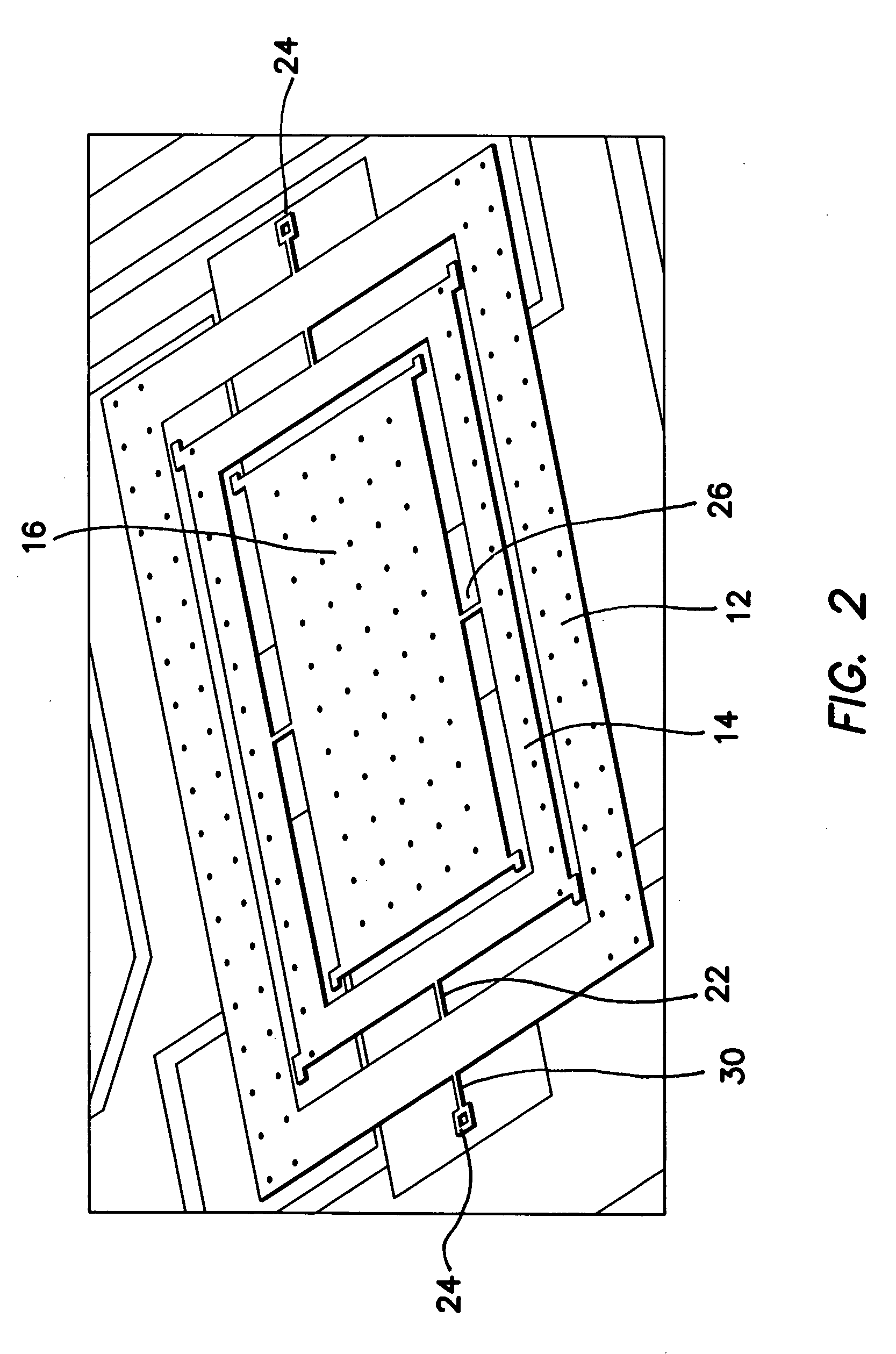Torsional nonresonant z-axis micromachined gyroscope with non-resonant actuation to measure the angular rotation of an object
a micro-machined gyroscope and z-axis technology, applied in the direction of acceleration measurement using interia forces, instruments, devices using electric/magnetic means, etc., can solve the problems of restricting the performance of the gyroscope, limiting the actuation amplitude of the gyroscope, and limiting the actuation voltage. , to achieve the effect of minimizing the nonlinear force profile and instability, reducing
- Summary
- Abstract
- Description
- Claims
- Application Information
AI Technical Summary
Benefits of technology
Problems solved by technology
Method used
Image
Examples
Embodiment Construction
[0029] The illustrated embodiment of torsional gyroscope system, generally denoted by reference numeral 10, is comprised of three interconnected rotary masses: the active gimbal 12, the passive gimbal 14, and the sensing plate 16 as depicted in FIG. 1. The active gimbal 12 and the passive gimbal 14 are free to oscillate only about the drive axis x. The sensing plate 16 oscillates together with the passive gimbal 14 about the drive axis, x, but is free to oscillate independently about the sense axis y, which is the axis of response when a rotation along z-axis is applied. Active gimbal 12 is coupled to substrate 28 though opposing anchors 24 lying along the x direction and held above substrate 28 by a pair of opposing suspension beams 22. Similarly, a pair of suspension beams 30 lying along the x direction connect active gimbal 12 to passive gimbal 14. Passive gimbal 14 is connected to sensing gimbal 16 by a pair of opposing suspension beams 26 lying along the y direction.
[0030] The...
PUM
 Login to View More
Login to View More Abstract
Description
Claims
Application Information
 Login to View More
Login to View More - R&D
- Intellectual Property
- Life Sciences
- Materials
- Tech Scout
- Unparalleled Data Quality
- Higher Quality Content
- 60% Fewer Hallucinations
Browse by: Latest US Patents, China's latest patents, Technical Efficacy Thesaurus, Application Domain, Technology Topic, Popular Technical Reports.
© 2025 PatSnap. All rights reserved.Legal|Privacy policy|Modern Slavery Act Transparency Statement|Sitemap|About US| Contact US: help@patsnap.com



